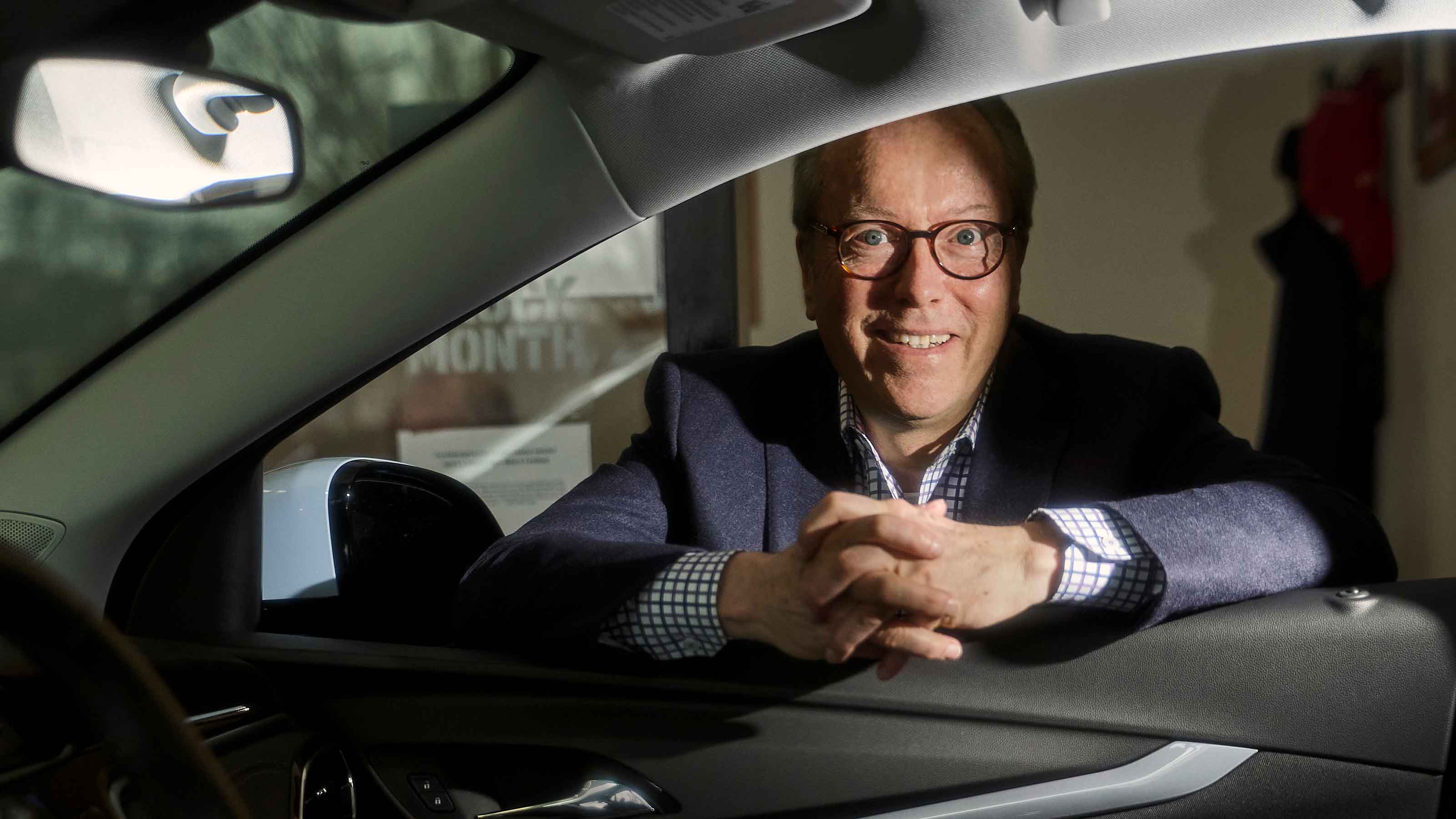Where Clinton and Trump Stand on Infrastructure
Both candidates have addressed America's crumbling infrastructure, but their plans differ in scope.

Key differences: Both candidates say they want to invest in America’s crumbling roads, bridges, tunnels and transit systems. Clinton has a $275 billion plan that includes expanding networks for free broadband access. Trump has only made suggestions regarding a “trillion-dollar rebuilding plan.”
Key Clinton quote: “I don’t have to tell you what a sorry state we’re in. Our roads and bridges are potholed and crumbling. Families endure blackouts because our electric grid fails in extreme weather. Beneath our cities, our pipeline infrastructure — our water, our sewer, you name it — is up to a century or more old. Our airports are a mess. Our ports need improvement. Our rail systems do as well.”
Key Trump quote: “In my opinion, we’ve spent $4 trillion trying to topple various people. If we could’ve spent that $4 trillion in the United States to fix our roads, our bridges, and all of the other problems — our airports and all of the other problems we’ve had — we would’ve been a lot better off.”
From just $107.88 $24.99 for Kiplinger Personal Finance
Become a smarter, better informed investor. Subscribe from just $107.88 $24.99, plus get up to 4 Special Issues

Sign up for Kiplinger’s Free Newsletters
Profit and prosper with the best of expert advice on investing, taxes, retirement, personal finance and more - straight to your e-mail.
Profit and prosper with the best of expert advice - straight to your e-mail.
Clinton’s main focuses include maintaining and rebuilding roads, bridges, public transit and airports, as well as extending Wi-Fi access in public spaces across America. Her five-year, $275 billion plan earmarks $25 billion for a national infrastructure bank that would encourage further public and private investment. The ultimate goal: generating $500 billion in funding. To pay for her proposal, the Democratic candidate would clamp down on tax shelters for offshore corporate profits. According to a report by the American Society of Civil Engineers, America’s infrastructure deficit is $1.6 trillion, meaning that Clinton’s plan would fail to cover even half of the estimate of the funds necessary to fully repair the nation’s framework.
At the Democratic National Convention Clinton promised to improve the infrastructure to create jobs for domestic workers. To fund this, she said she would make sure “Wall Street, corporations and the super-rich” pay their “fair share of taxes.” This follows her tax plan which proposes significant tax increases on the top 1%.
Trump has alluded to a “trillion-dollar rebuilding plan” that, in dollar terms, comes closer to hitting the $1.6 trillion deficit mark reported by the ASCE. Citing a Senate Budget Committee estimate of job growth from infrastructure investment, Trump claims his plan would create 13 million jobs. Like Clinton, Trump wants to improve America’s roads, bridges, airports, rail systems and more. He believes his experience in the real estate industry would allow him to rebuild the country’s infrastructure “on time and under budget.” Trump hasn't explained how he would fund his proposals or one of his most widely cited campaign promises: building a wall between the U.S. and Mexico. Without factoring in the diplomatic challenges of erecting such a wall, Trump’s estimates of $4 to $12 billion in construction costs fall short of experts’ estimates of closer to $25 billion, plus $750 million a year for maintenance.
During his speech at the Republican National Convention Trump hinted at where the funding for his proposed rebuilding plan would come from. He promised to create “millions of more jobs” through rebuilding bridges, roads and tunnels. Funding would come from this de-regulation of businesses, which could free up as much as $2 trillion, he says.
Sarah Smith contributed to this report.
Profit and prosper with the best of Kiplinger's advice on investing, taxes, retirement, personal finance and much more. Delivered daily. Enter your email in the box and click Sign Me Up.

-
 A Contrarian Approach Pays Off for This Bond Fund
A Contrarian Approach Pays Off for This Bond FundThe Dodge & Cox Income Fund has outperformed in 2025 thanks to its managers' fearless approach.
-
 How AI Is Changing the Way Americans Spend on Live Events
How AI Is Changing the Way Americans Spend on Live EventsAI bots are reshaping ticket prices, resale markets and how fans shop. Here's what it means for your wallet and how to get the best deals on concerts, sports and shows.
-
 7 Outrageous Ways Retirees Can Invest Their Money in 2026
7 Outrageous Ways Retirees Can Invest Their Money in 2026Stocks and bonds aren't the only ways to invest your retirement "fun money."
-
 How to Search For Foreclosures Near You: Best Websites for Listings
How to Search For Foreclosures Near You: Best Websites for ListingsMaking Your Money Last Searching for a foreclosed home? These top-rated foreclosure websites — including free, paid and government options — can help you find listings near you.
-
 Four Tips for Renting Out Your Home on Airbnb
Four Tips for Renting Out Your Home on Airbnbreal estate Here's what you should know before listing your home on Airbnb.
-
 Is Relief from Shipping Woes Finally in Sight?
Is Relief from Shipping Woes Finally in Sight?business After years of supply chain snags, freight shipping is finally returning to something more like normal.
-
 Economic Pain at a Food Pantry
Economic Pain at a Food Pantrypersonal finance The manager of this Boston-area nonprofit has had to scramble to find affordable food.
-
 The Golden Age of Cinema Endures
The Golden Age of Cinema Enduressmall business About as old as talkies, the Music Box Theater has had to find new ways to attract movie lovers.
-
 Pricey Gas Derails This Uber Driver
Pricey Gas Derails This Uber Driversmall business With rising gas prices, one Uber driver struggles to maintain his livelihood.
-
 Smart Strategies for Couples Who Run a Business Together
Smart Strategies for Couples Who Run a Business TogetherFinancial Planning Starting an enterprise with a spouse requires balancing two partnerships: the marriage and the business. And the stakes are never higher.
-
 Fair Deals in a Tough Market
Fair Deals in a Tough Marketsmall business When you live and work in a small town, it’s not all about profit.